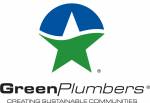Insulation and Building Envelope
Australia has some of the worst performing homes for thermal energy efficiency. This is often because of the poor insulation standards.
Proper insulation is a key element in maintaining a comfortable and energy-efficient home. Installing insulation in ceilings, walls, and underfloor areas can significantly impact the overall energy efficiency of a building.
Importance of Insulation
Insulation plays a crucial role in maintaining a consistent indoor temperature by preventing the transfer of heat between the inside and outside of a building. This not only enhances comfort but also reduces energy consumption, leading to lower utility bills and a smaller carbon footprint. By properly insulating ceilings, walls, and underfloor spaces, homeowners can create a more sustainable and energy-efficient living environment.
Here's a new video on how to install insulation correctly
Types of Insulation
Before delving into the installation process, it's essential to understand the different types of insulation available. Each type has unique properties and is suitable for specific applications. The common types of insulation include:
-
Fiberglass Insulation:
- Composed of fine glass fibers.
- Available as batts, rolls, or loose-fill.
- Excellent thermal resistance.
- Resistant to mold and mildew.
- Ideal for ceilings, walls, and underfloor spaces.
-
Cellulose Insulation:
- Made from recycled paper or plant fibers.
- Treated for fire resistance.
- Effective in reducing sound transmission.
- Suitable for walls and ceilings.
-
Spray Foam Insulation:
- Expanding foam that fills gaps and voids.
- Provides an airtight seal.
- Excellent thermal insulation properties.
- Suitable for walls and ceilings.
-
Rigid Foam Insulation:
- Boards or panels made from polystyrene, polyisocyanurate, or polyurethane.
- High thermal resistance.
- Commonly used in walls and roofs.
- Resistant to moisture.
-
Reflective Insulation:
- Consists of a reflective surface, often aluminum, to reflect heat.
- Effective in hot climates.
- Suitable for ceilings and underfloor areas.
Now, let's explore the proper installation techniques for each of these insulation types in ceilings, walls, and underfloor spaces.
Ceiling Insulation Installation
-
Fiberglass Batts and Rolls:
- Measure the space between ceiling joists or trusses.
- Cut the insulation to fit the measured space.
- Ensure a snug fit without compressing the insulation.
- Use a vapor barrier if needed, facing the warm side of the house.
-
Cellulose Insulation:
- Blow or pour cellulose insulation evenly between ceiling joists.
- Use a blower machine for efficient coverage.
- Check for any gaps and fill them as needed.
- Install a vapor barrier if required.
-
Spray Foam Insulation:
- Hire a professional for the application of spray foam insulation.
- Ensure a uniform and even application.
- Address any voids or gaps promptly.
- Trim excess foam after it cures.
Wall Insulation Installation
-
Fiberglass Batts and Rolls:
- Install batts between wall studs, ensuring a snug fit.
- Cut around electrical outlets and other obstacles.
- Use a vapor barrier if needed, placing it on the warm side of the wall.
-
Cellulose Insulation:
- Drill small holes into the wall cavities.
- Blow or pour cellulose insulation into the cavities.
- Seal the holes afterward.
- Consider professional installation for existing walls.
-
Spray Foam Insulation:
- Apply spray foam evenly within the wall cavities.
- Ensure complete coverage, addressing any gaps.
- Trim excess foam once it cures.
- Seek professional assistance for large or challenging projects.
Underfloor Insulation Installation
-
Fiberglass Batts and Rolls:
- Place batts or rolls between floor joists.
- Use wire or string to secure the insulation in place.
- Ensure a snug fit, covering the entire underfloor area.
-
Cellulose Insulation:
- Blow or pour cellulose insulation evenly between floor joists.
- Use a blower machine for efficient coverage.
- Check for any gaps and fill them as needed.
-
Spray Foam Insulation:
- Apply spray foam under the floor, filling gaps and voids.
- Ensure an even and complete application.
- Trim excess foam after it cures.
- Seek professional assistance for challenging underfloor spaces.
Considering Climate Zones
The choice of insulation type is influenced by the climate zone in which your home is located. Different climates have varying temperature ranges, humidity levels, and heating or cooling requirements. Here's a breakdown of the recommended insulation types for different climate zones:
-
Cold Climate Zones:
- Opt for insulation with high R-values to resist heat loss.
- Fiberglass batts, rigid foam, and spray foam are effective choices.
- Ensure proper air sealing to prevent drafts.
-
Hot Climate Zones:
- Reflective insulation is beneficial in hot climates.
- Use materials that provide a barrier against radiant heat.
- Consider spray foam for air-sealing properties.
-
Mixed Climate Zones:
- A combination of insulation types may be necessary.
- Use insulation materials that offer both thermal and moisture resistance.
- Pay attention to air sealing to enhance energy efficiency.
-
Humid Climate Zones:
- Choose insulation materials resistant to mold and mildew.
- Ensure proper ventilation to prevent moisture buildup.
- Consider rigid foam or closed-cell spray foam.
Proper insulation is a cornerstone of a comfortable and energy-efficient home. Whether you're insulating ceilings, walls, or underfloor spaces, choosing the right insulation material and installing it correctly are essential steps. Understanding the diverse types of insulation and their suitability for different climate zones ensures that your efforts result in a well-insulated, environmentally friendly, and cost-effective living space. By following these guidelines, homeowners can contribute to energy conservation, reduce utility bills, and create a sustainable home environment for the long term.
For more detailed training please complete our online Installation Installation Best Practice Course
To find accredited, trained and qualified Insulation Installer Contractors please check our Directory database:









